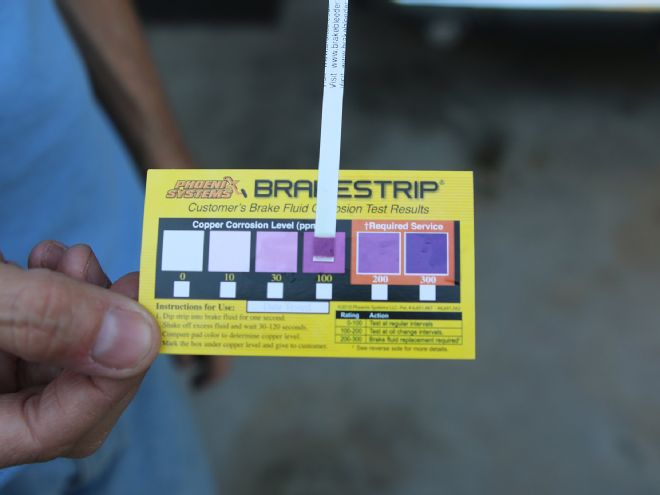
If you’re reading this, chances are that you change your engine oil religiously, like every six months or 3,000 miles, because that’s what has been ingrained into our car guy/girl souls since before we got a driver’s license. Some people are even conscientious enough to change coolant, automatic transmission, and differential fluid on a regular basis. But who pays attention to brake fluid? That’s right, as long as the brakes still work and the pedal is solid, nobody but full-on road racers even think about the brake fluid. But just as motor oil’s effectiveness lessens with age, so does brake fluid. The corrosion inhibitors in brake fluid become depleted with age and use, leaving the brake fluid unprotected and vulnerable to corrosion that can lead to ABS damage, brake system failure, brake fade, and longer stopping distances. Copper (from the brazing of the steel brake lines) is the first metal to corrode in the brake system, so copper levels in the fluid predict the onset of more damaging corrosion—copper is essentially the canary in the coal mine when it comes to evaluating brake fluid.
Phoenix Systems, who you might know from their bitchin’ brake bleeding kits, has developed BrakeStrip, a quick and easy way to test the copper level in your brake fluid. The technology is complex but the test is brutally simple. Just dip the BrakeStrip into the brake fluid at the master cylinder reservoir for a second, pull it out and wait for the color reaction. In about a minute, the strip will change from white to a shade of purple in proportion to the copper level in the fluid. Match the strip color to the color scale on the included card to see where the fluid’s copper level is. Anything past 200 ppm means the fluid should be flushed and changed. The BrakeStrip Brake Fluid Test Kit, which is aimed at professional service stations and mechanics, comes with a tube containing 100 strips and 100 color rating cards and sells for $78.99. The average consumer will most likely never need to test 100 brake systems, but this would be a great investment for a car club or similar group of car buddies. Phoenix Systems also has a BrakeStrip CU + ID that tests for copper level and the type of fluid in use for $10 more.
In addition to the BrakeStrip kit is the BrakeShot Brake Fluid Enhancer that completely restores the corrosion inhibitors in fluid that’s not completely corroded with copper. Again, any reading over 200 ppm on the BrakeStrip means the fluid should be replaced, but if it’s less than that, adding BrakeShot to the fluid can bring it back into tolerance. It works on any vehicle with DOT 3, 4, or 5.1 brake fluid, and sells for $21.99.
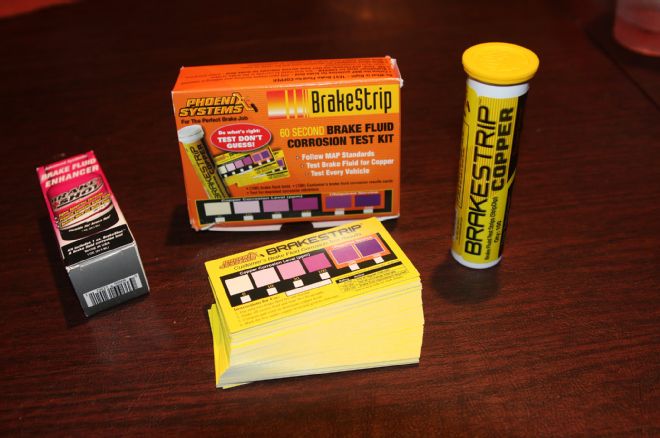
1. The BrakeStrip Test Kit comes with 100 test strips in the tube and 100 color-matching cards and sells for $78.99. The BrakeShot (left) is $21.99.
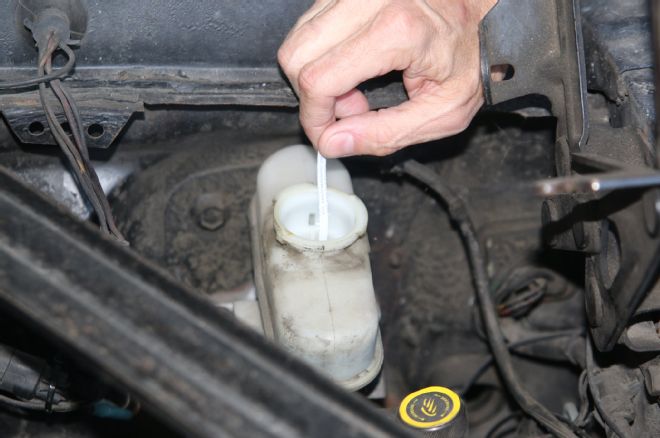
2. Using the BrakeStrip is too easy. Just dip it in the master cylinder then pull it out, shake off the excess (away from the paint!), and wait for the color to change.
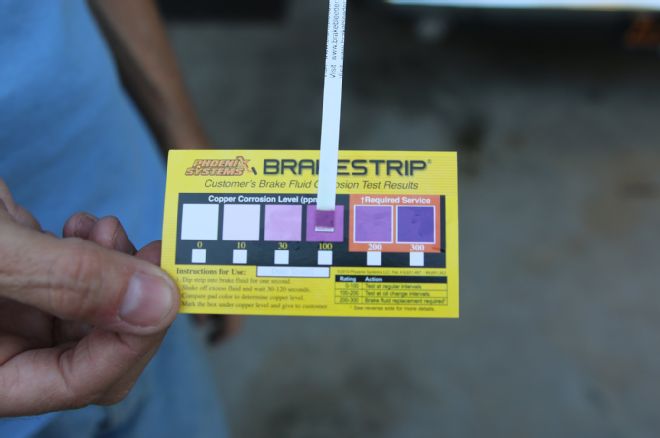
3. Compare the color on the strip to the color card to see how many parts per million of copper are present in the fluid. The darker purple, the worse off the fluid is.
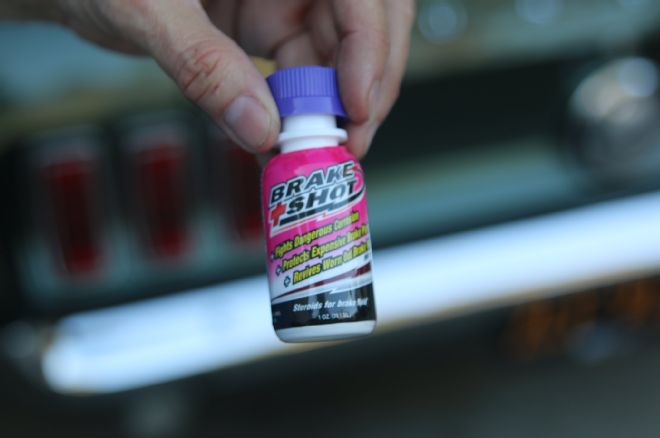
4. If the fluid is under 200 ppm of copper, BrakeShot is effective in restoring the corrosion resistance to the fluid. It’s about the size of a 5-Hour Energy bottle.
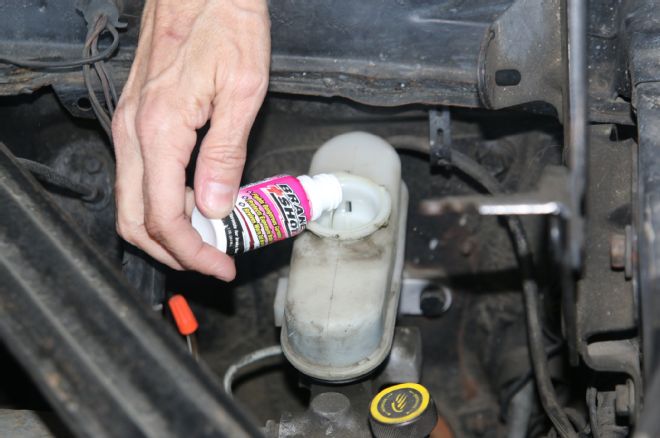
5. Dump it in the master cylinder, but make sure the small amount of BrakeShot isn’t enough to overflow the reservoir. Testing has shown that it takes 1 week to treat the furthest caliper in an ABS system, and 3 weeks in a non-ABS system.
Phoenix Systems
BrakeShot
888.749.7977